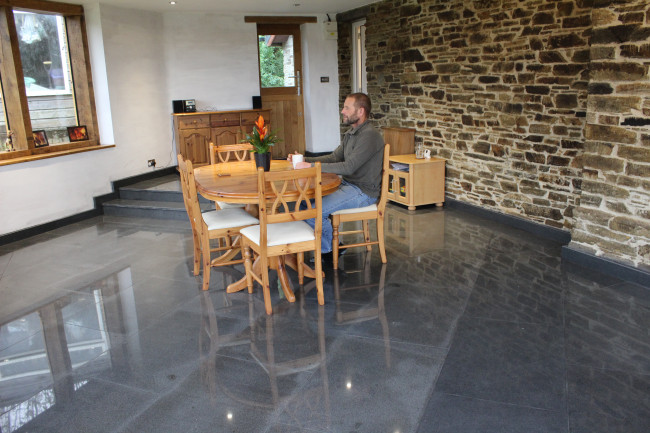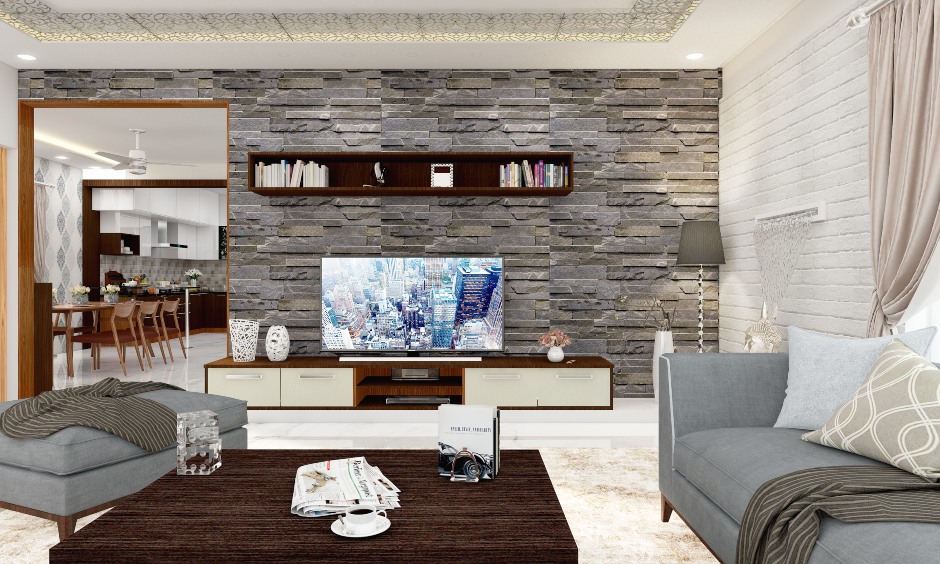Heyku.me – Whether you are building a home or just renovating your current residence, there are many different types of stone walls to choose from. These include, but are not limited to, dry-laid, Lantoom, Fieldstone, Ashlar and Pennsylvania Colonial Wallstone.
Creating a Unique Look with a Fieldstone on a Wall
Whether you want to make a decorative garden pathway or line a property, you can create a unique look with fieldstone on granite stone walls. These low-cost and long-lasting blocks are available in several irregular shapes and colors. They are a popular choice among wall builders. Depending on the size of your project, it may be more cost-effective to use concrete or veneer stones instead of natural stones. These types of stones are manufactured and are easier to cut and piece together.
The most common type of stone wall is the dry laid wall. These stones are usually set in mortar to prevent small stones from jostling. However, these types of walls have some disadvantages. Because of the large quantity of stone, they require large amounts of manual labor. In addition, they may not meet local building regulations.

Adding a retaining wall to your home can be a great way to enhance the landscape. Retaining walls help you divide your property into multiple layers, increase usable space, and add a touch of depth to your landscape. Depending on your preference and budget, you can build a retaining wall of many different materials. Dry-stacked PA fieldstone is an excellent choice for a retaining wall. This material is completely natural and looks spectacular in a rustic setting. It can also complement a wide range of landscaping styles and architectural designs.
Using Lantoom Granite for Beautifully Natural Walls
PA fieldstone is a variety of sandstone that is naturally beautiful. It is available in a variety of hues, including red, grey, and brown. It can be purchased in a variety of thicknesses, from 4 to 8 inches. Using Lantoom granite as the base for your next stone wall project is no doubt a prudent move. Not only is the material durable, it is also available in a variety of sizes. To get started on your own Lantoom granite wall, first lay a thick layer of mortar. Once this is down, lay the flat stones on top. Then, raise the wall one layer at a time, alternating between the two materials. To get the most out of your wall, a wheelbarrow is a good way to go. Another nifty bit of kit is the metal clamp, which will allow you to link two walls together.
There is a plethora of stone wall options out there, but it is important to find the right one for your property. You should always consider the location of the wall, as the soil and rock properties will be vital to its success. Having an ashlar stone with a split face is an excellent way to show off the natural beauty of a stone. Having a split face will allow you to display various stone layers without creating an uneven look.

Having an ashlar stone with split face will also display less variation in the vertical face of the stone. This will make the stone appear larger and more powerful. An ashlar stone with a split faced is a good choice for a rustic aesthetic. It will also show off the different colors of the inside grain.
Wall Stone Types with Dry Granite Stone
This is a great choice for a church or other type of building. The historic church in the picture below has a wonderful exterior wall layout. A random ashlar pattern has two or three course heights. Each course height is broken down into sawn beds and split faces. The bed heights range from 15 percent at 2 1/6” to 35 percent at 7 1/2”.
Unlike other types of stone walls, dry-laid granite stone walls are built without the use of mortar. Instead, each rock is laid with structural integrity in mind. The material is typically granite, but sandstone and limestone are also used. These rocks are durable and resistant to stains.

Depending on the location, stones may be locally harvested or reclaimed from old stone buildings. For a more unique look, you can also mix and match different kinds of rocks. Having a variety of rocks adds visual interest and helps you create a unique wall design. The best type of rock to use for a dry-laid stone wall is one that is flat and easy to work with. This will save you time and money. Some stones may be reclaimed from a previous building, but others are natural or leftover from construction sites.
